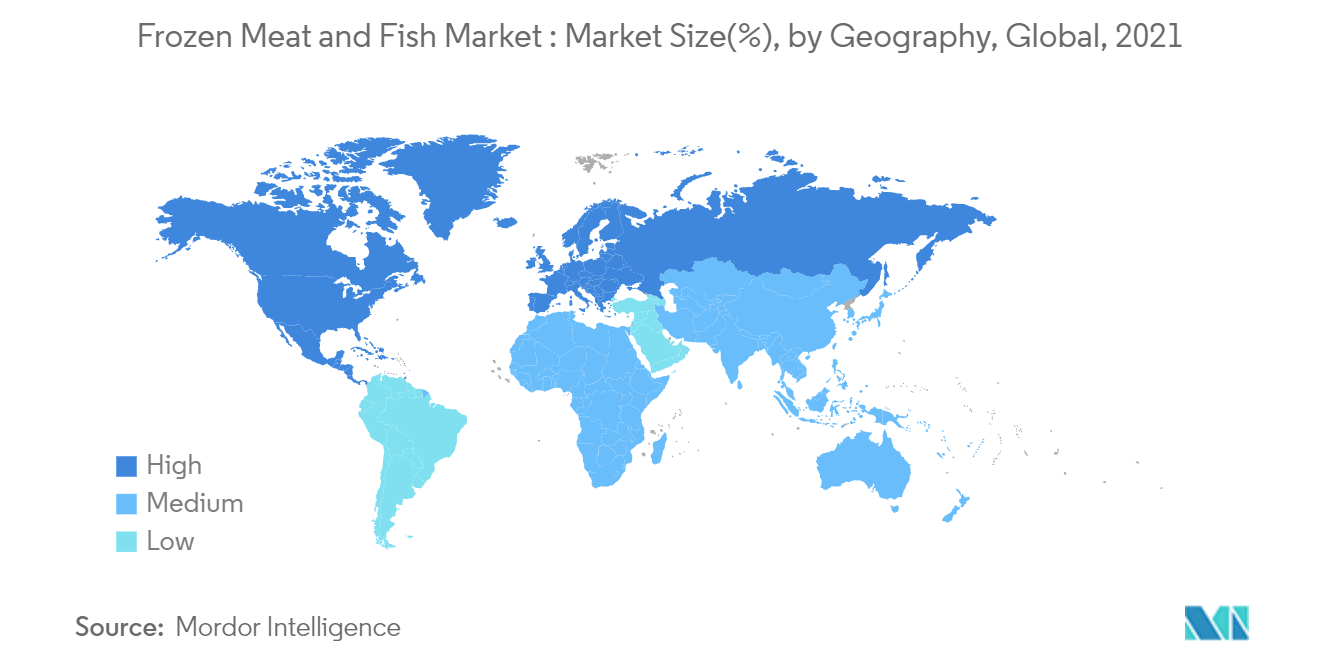Market Trends of Frozen Meat and Fish Industry
This section covers the major market trends shaping the Frozen Meat & Fish Market according to our research experts:
Longer shelf lives, expenditure on frozen meals, and price point, these factors are pushing the market
The introduction of products with longer shelf lives, consumer desire to stock up in case of food shortages, perishability, and shopping frequency are the primary drivers of the market. These circumstances have resulted in the necessity to stockpile eatables in homes that may endure for a longer period without spoiling, which has increased sales of frozen meat and fish. For example, the American Frozen Food Institute (AFFI) announced in February 2021 that sales of frozen meals such as seafood and chicken were 21.0% higher than in 2019, with double-digit sales of all sorts of frigid/chilled meals. Furthermore, retail demand for the aforementioned goods has been 15-20% greater than it was during the pandemic. Perception of people regarding frozen meat is also changing, more people are considering frozen meat and fish as good as fresh meat and fish. This perception of people increased annual expenditure on frozen meals, as per the data from the Bureau of Labor Statistics, the average annual expenditure on frozen meals per consumer unit in the United States in 2020 was USD 53.81. In short term, an increase in these numbers is expected which will push the frozen meat and fish market heavily.
Apart from all these factors, price is still one of the most important factors considered by the consumers, Generally fresh meat and fish are more expensive than frozen fish and meat. Taking all these factors into consideration, it is expected that in the forecast period (2022-2027), the market for frozen meat and fish will grow at a faster pace.

Europe is the largest Market
Europe is the largest market for frozen meat and fish, and the per-capita consumption of meat has increased in the last few years in the region. Germany, Poland, France, Italy, Spain, and the United Kingdom are showing significant growth in sales of frozen meat and fish, and the market share of frozen seafood is expected to grow faster than the other product types, as per the Eurobarometer poll 2021, the vast majority of Europeans (64%) continue to consume fish regularly, ideally, at home, frozen items are the most popular, slightly ahead of fresh and canned goods. As per the poll, Nearly 80% of people buy fish or seafood items at the grocery store, supermarket, or hypermarket, considerably outnumbering any other location. These numbers depict the need to develop online-sales channels to push the market further. It is expected that players will expand their reach further across Europe by investing heavily in online platforms. The poll also indicated that one-fifth of Europeans (21%) claim they eat seafood at least once a month. This is also a good indicator for the market, as frequent consumption leads to frequent shopping, but due to the dynamic lifestyle of people getting fresh meat and fish is generally difficult, this generates the need for frozen meat and fish, as they have longer shelf-life. All these factors coupled together will push the market significantly in Europe in the forecast period.


